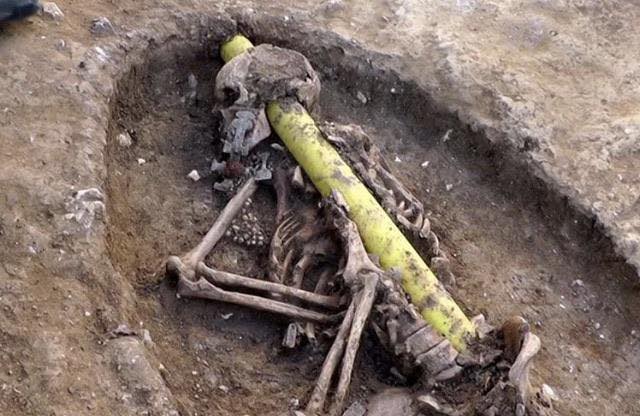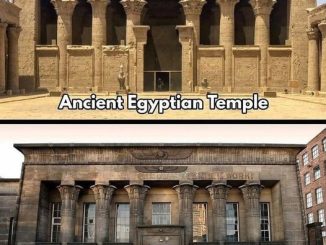In the quaint village of Oakington in Cambridgeshire, a seemingly ordinary discovery beneath a primary school playground in 2014 unearthed an extraordinary glimpse into the past. Beneath the playground, an Anglo-Saxon cemetery from the 6th century CE revealed over 100 skeletons, each holding a piece of history. Among these skeletons was the remains of an Anglo-Saxon woman, whose skull was pierced by a gas line, a stark reminder of the juxtaposition between modern infrastructure and ancient history. This blog post delves into the remarkable findings of the Oakington excavation, shedding light on the life and times of the Anglo-Saxon woman and the broader historical context of the site.

The Discovery: Unearthing an Anglo-Saxon Cemetery
The discovery of the Anglo-Saxon cemetery in Oakington was both unexpected and enlightening. Archaeologists working on a routine excavation under the primary school playground stumbled upon a burial ground that dated back to the 6th century CE. The cemetery contained over 100 skeletons, each providing valuable insights into the lives, customs, and health of the Anglo-Saxon people.
The site was meticulously excavated, revealing a range of burial practices and grave goods that painted a vivid picture of the community that once thrived in the region. Among the most striking finds was the skeleton of an Anglo-Saxon woman, whose skull had been pierced by a modern gas line. This discovery highlighted the delicate balance between preserving our past while accommodating modern advancements. The woman’s remains, like those of her contemporaries, were carefully studied to glean information about her life and the society she belonged to.
The Anglo-Saxon Woman: A Window into the Past
The skeleton of the Anglo-Saxon woman, discovered with a gas line running through her skull, became a focal point of the excavation. Her remains were well-preserved, allowing archaeologists to conduct detailed analyses and reconstructions. The woman’s age at the time of her death was estimated to be between 25 and 35 years. The condition of her bones suggested she led a physically demanding life, consistent with the agricultural and manual labor-intensive lifestyle of the Anglo-Saxon period.
The burial practices observed in the cemetery, including the woman’s grave, provided insights into the social and cultural norms of the time. The grave goods, which included items such as jewelry, tools, and pottery, indicated a society with complex rituals and a belief in an afterlife. The presence of these items suggested that the woman held a certain status within her community, and her burial was conducted with care and respect.
The analysis of the woman’s remains also offered a glimpse into the health and diet of the Anglo-Saxon people. Signs of wear on her teeth and bones indicated a diet that included coarse grains and a physically demanding lifestyle. Despite the hardships, there were also indications of communal care, as some individuals showed signs of having lived with significant injuries or ailments for extended periods, suggesting that the community provided support for its members.
The Intersection of Modern and Ancient Worlds
The discovery of the gas line running through the woman’s skull was a stark reminder of the intersection between modern infrastructure and ancient history. The gas line, laid down in recent years, inadvertently passed through the burial ground, highlighting the challenges faced by archaeologists and urban planners in preserving historical sites while accommodating contemporary needs.
This incident underscored the importance of conducting thorough archaeological surveys before undertaking construction projects, particularly in areas with rich historical significance. The excavation at Oakington served as a valuable case study for balancing development with heritage preservation, emphasizing the need for careful planning and collaboration between archaeologists, developers, and local authorities.
The juxtaposition of the ancient skeleton with modern technology also sparked a broader conversation about the preservation of cultural heritage in an ever-evolving world. It reminded us that history is not static; it exists beneath our feet, intertwined with the present. Each discovery offers a chance to learn from the past, informing our understanding of human civilization and guiding our future endeavors.


